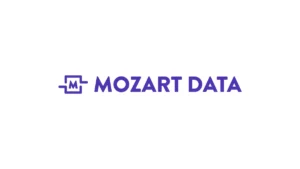As organizations grow, their data grows with them. As they seek to manage their growing data and become data-driven, they start to look for data infrastructure solutions that work for their specific needs and work within their resource constraints.
If you’re in this position, one of the critical needs is finding a large data storage solution. The challenge isn’t just finding a warehouse at the right price point, but also making sure it’s the right type of storage solution for your company, with features that make it effective.

Here’s how to determine the best type of large data storage solutions for your company, as well as the top options in those categories.
File-based storage systems
Do you need to store large amounts of large files, like video, or very large text files? The solution you should be considering is file-based data storage.
The leading options here are cloud storage solutions that allow you to easily move large amounts of these files and retrieve them as needed. These solutions aren’t organized for complex analysis or pulling something like customer data, but they provide the flexibility needed to handle this type of storage.
There are many options, but the two major names in this space are Google Cloud Storage and Amazon S3.
Google Cloud Storage and Amazon S3
These products have virtually identical offerings — the decision for most companies comes down to which cloud platform they’re already using or would like to use.
With Google Cloud Storage (GCS) or Amazon S3, companies have the option to store as much data as they need and retrieve it as often as they’d like.
There are a number of storage classes, tailored to workload and access needs, that affect costs — making this a particularly competitive option for companies that are looking to store data for longer periods of time.
Other features include:
-
Multiple redundancy options
-
Easy data transfer processes
-
Archival storage
-
Object lifecycle management
-
Storage monitoring
-
Storage analytics
-
Access management
-
Multiple data transfer services
Row-based options
If you need to store and access data about your customers on an individual basis, you need a row-based data warehouse, also popularly known as a relational database. These warehouses are great for looking up the specific details of an individual account and rapidly returning results to your team.
These databases are also used to return personalized web experiences. When you log into a website and see your profile, saved settings, etc., it’s because that information is rapidly pulled from a row-based data solution.
Like your file-based options, there are two common options in this space as well: PostgreSQL and MySQL.
PostgreSQL and MySQL
These two options are incredibly similar and provide robust options. PostgreSQL is an established name in the space and is famously open source. Mozart Data also uses PostgreSQL. One of the most important PostgreSQL features for less experienced users is the extensive documentation available to help teams get up to speed with the product. MySQL, an Oracle product, is known as the most popular open source database and is used by companies like Twitter and Facebook.
Both are known for scaling well with increasing quantities of data and the number of concurrent users.
Both products have the following features:
-
Extensive data types
-
Reliability and disaster recovery tools
-
Data integrity tool
-
Managed versions of the product
-
Extensive security qualifications
-
Thorough documentation
Columnar data warehouses
If your goal is to combine data from multiple sources and perform complex analysis, you should be in the market for a columnar data warehouse, also known as a column-based or column-oriented database.
For a simple example of what this looks like, let’s say a company collects birthday information from people who subscribe to their email newsletter. That company wants to know the average age of subscribers who purchased a new product (maybe they’re already planning their next holiday campaign). Each customer’s information exists in one row — first name, last name, address, birthday, payment method, etc. — but for this task, they really only care about one column.
Columnar data warehouses excel at rapidly pulling that information, without having to analyze all of the information in that table to return a result, making them faster (and thus cheaper) for analysis.
The top three options here are Snowflake, Redshift, and BigQuery.
Snowflake
We think Snowflake is the clear best-in-class option in this space, particularly for start-ups. Snowflake is easy to implement and presents great opportunities for cost savings.
With columnar warehouses, costs can come from storage and computation, measured in seconds of compute time when you query one of your tables. Snowflake data warehouses are excellent in this area because storage and computation are decoupled, giving Snowflake customers greater flexibility. You only pay for the storage you need and aren’t at risk of running out of computational resources, because you can ramp them when you actually need them.
Other features include:
-
Ability to live on AWS or Google
-
Connectability to business intelligence (BI) tools
-
Adjustable defaults for decisions like data syncing
-
Support of standard SQL
-
Best-in-class security
-
Automated updates with no scheduled downtime
Amazon Redshift
Redshift is another popular warehouse that supports SQL to analyze data. Amazon emphasizes their automation and machine learning capabilities that can save users time on compute, translating to cost savings.
Redshift also includes extensive security options, like firewall controls, at no extra cost.
Additional features include:
-
Automated table design
-
Connectability to business intelligence (BI) tools
-
Integration with other AWS services
BigQuery
BigQuery is part of Google Cloud Platform and is another popular option. BigQuery also supports SQL.
BigQuery can serve as a foundation for Google-based BI capabilities and can be directly integrated with tools like BigQuery BI Engine and Data Studio.
Other features include:
-
Built-in machine learning and AI integrations
-
Data governance and security tools
-
Automatic backup and easy restore
Choosing the best storage solution for you
These are all great options if set up and utilized properly. We’ve highlighted some notable features of each solution, but they all have many additional features and use cases. We encourage you to do additional research as you see fit.
With that said, we’re very strong believers in Snowflake. That’s why our modern data platform, which can take you from siloed data to analysis-ready in an hour, is built with Snowflake under the hood. We chose the best technology to serve our customers. Read more about this decision here.

